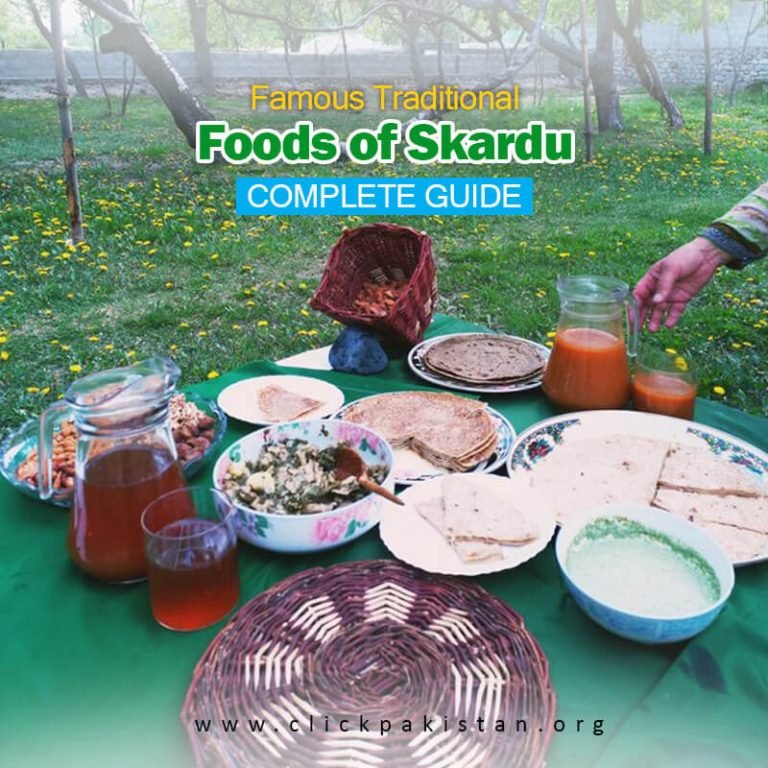Table of Contents
Skardu foods present a delightful paradox to tourists’ palate. Characterized by its hearty, robust flavours, it differs from mainstream South Asian cuisine. Its often surprising visitors with its unique taste and flavour.
In this article i have mentioned the best traditional food in Skardu.
Predominantly influenced by Central Asian, Tibetan, and local Balti culinary traditions, Skardu’s food reflects its rugged terrain and the lifestyle of its people.
Staples like barley and wheat and an emphasis on meat (particularly yak and lamb) form the backbone of this region’s diet.
The use of spices here is moderate. It is focusing more on enhancing the ingredients’ natural flavours rather than overpowering them, which contrasts sharply with the often fiery and heavily spiced dishes found in other parts of South Asia.
Tourists may find the prevalence of soups and stews, like the hearty Thukpa or the nourishing Apricot Soup (Chuli), a delightful change. Rich in nutrients and flavour, these dishes are tailored to provide warmth and energy in the cold, high-altitude climate.
The local bread, Khambir, a thick, whole wheat bread, distinctly differs from the soft, leavened bread commonly found in the plains.
To experience the best of Skardu’s food and scenery, check out our Skardu Tour Packages for exciting tour options.
Unique Experience of Savouring Butter Tea
Additionally, the unique experience of savouring butter tea (Gur Gur Chai), a salty, buttery concoction, is often an unexpected twist for those accustomed to sweetened or spiced teas.
Dairy, particularly cheese and butter sourced from yak and cows, adds a creamy texture and richness to many dishes, differing from the more common use of cream or ghee in other South Asian cuisines.
For tourists, the experience of Skardu cuisine is a tasting adventure and an insightful journey into the region’s culture and lifestyle. The simplicity and freshness of ingredients, often organically grown or grazed, make the food in Skardu wholesomely satisfying yet distinctively different from what many might have experienced elsewhere.
Thus, this cuisine stands as a testament to the region’s cultural heritage, climatic challenges, and the indomitable spirit of its people.
Let us dive into Skardu’s culinary landscape comprehensively. Our journey takes us through the rich tapestry of historical influences that have left their mark on its cuisine.
We will explore its diverse dishes and shed light on the cultural significance of food in the daily lives of its inhabitants.
Moreover, we shed light on sustainable practices, provide valuable tips for navigating the local dining scene, and even offer recommendations for seamless beverage pairings that complement Skardu’s flavours.
Read More: Best Skardu Tour Packages 2025
List of Top Food of Skardu
Following is the list of the best traditional food in Skardu.
- Chapshuro
- Momo
- Shapik Shapik
- Mantu
- Tsampa
- Tingmo
- Chhurpi
- Harissa
- Khambir
- Girewan
- Thukpa
- Butter Tea (Gur Gur Chai)
Chapshuro:
Chapshuro is a popular, delicious food of Skardu’s cuisine. These pastries are typically filled with either minced meat (commonly mutton or yak meat) or vegetables, creating a savoury and flavorful snack or meal option.
The name “Chapshuro” is believed to be derived from the Balti word “chap,” which means flat, and “shuro,” which means bread, describing the flat and bread-like appearance of this dish.

Momo:
Momo dumplings have gained popularity in Skardu, influenced by Tibetan cuisine. These delicate parcels are made from a thin dough wrapper filled with minced meat (usually mutton or chicken), vegetables, and aromatic spices.
The dumplings are then steamed or occasionally fried to perfection. Momo dumplings are typically served with a tangy dipping sauce made from tomatoes, chilli, and local spices.
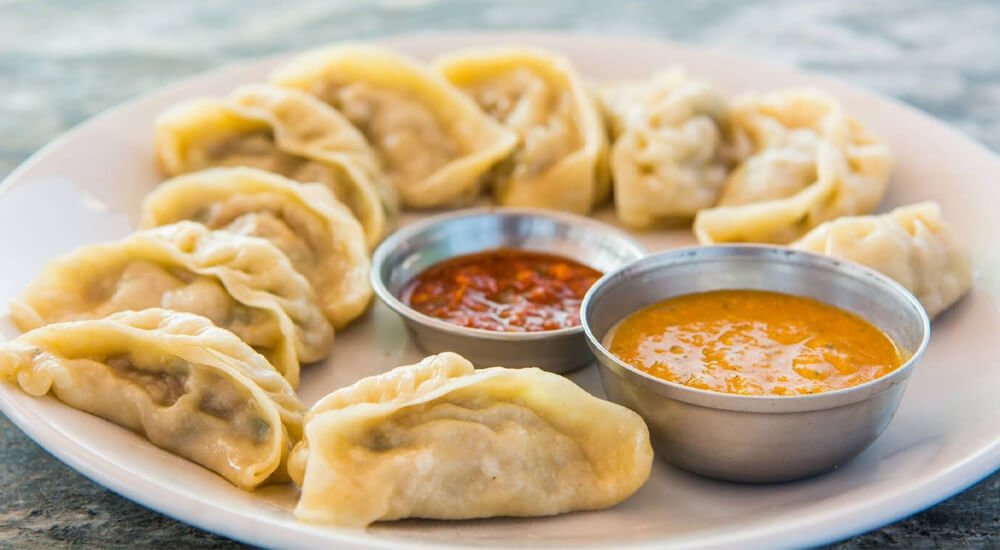
Shapik Shapik:
Shapik Shapik is a unique and delightful sweet dumpling in Skardu. These bite-sized pastries are created by frying small pieces of dough and then soaking them in a fragrant sugar syrup flavoured with cardamom, rose water, or saffron.
The result is a crispy dessert on the outside, moist on the inside, and infused with aromatic sweetness.
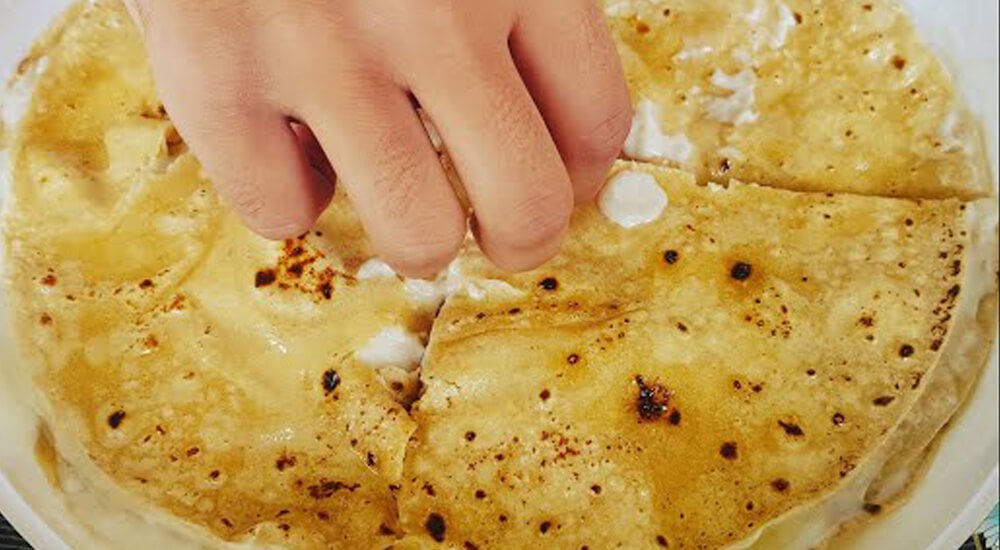
Mantu:
While Mantu is more commonly associated with Afghan cuisine, it has also found its way into Skardu’s culinary repertoire. These dumplings consist of a thin dough wrapper stuffed with seasoned minced meat, usually beef or lamb, and finely chopped onions.
The dumplings are then steamed to perfection, often served with yoghurt sauce, and garnished with dried mint.
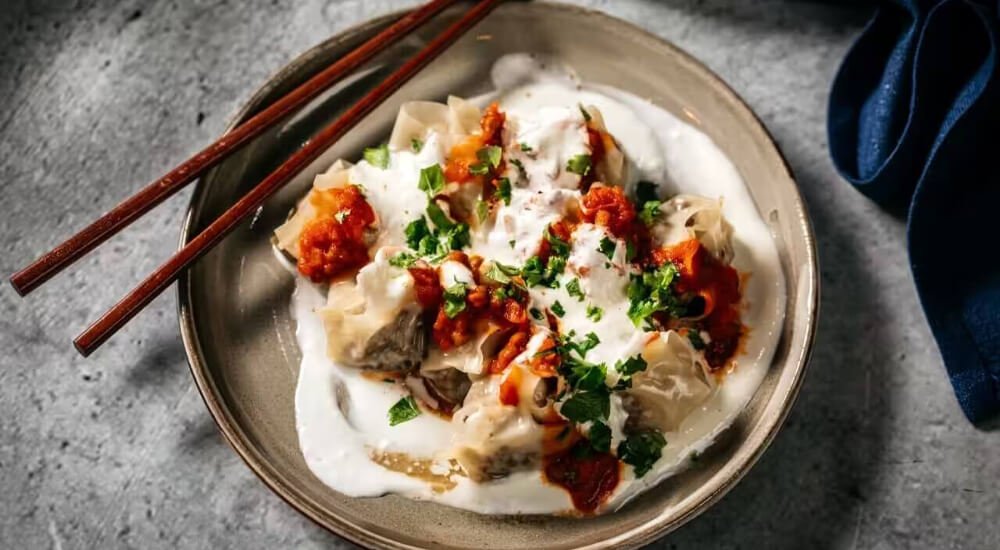
Tsampa:
Tsampa is a traditional Tibetan dish of roasted barley flour. In Skardu, tsampa is sometimes used to make dumplings. The roasted barley flour is mixed with water and shaped into small dumplings.
These dumplings are dense and nutritious, offering a unique taste of the local cuisine.
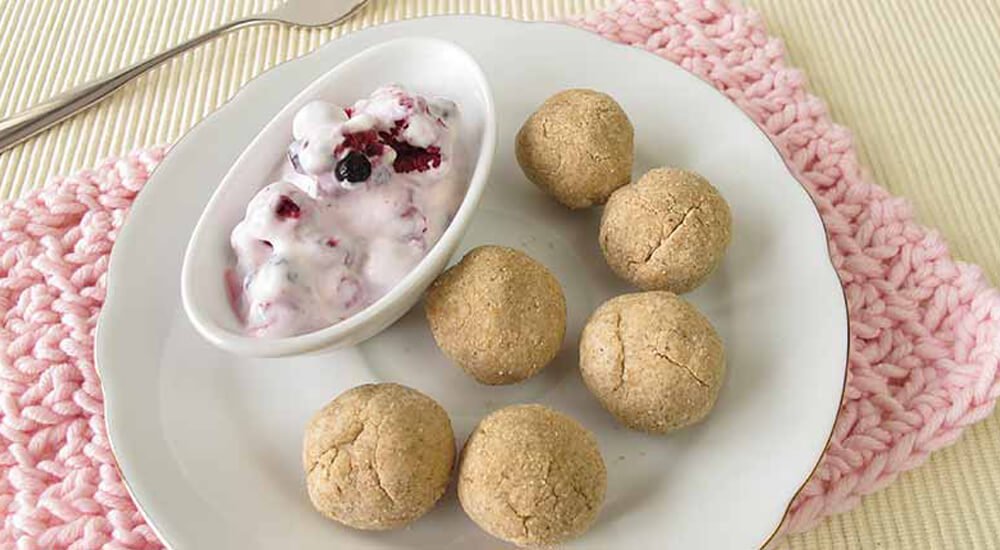
Tingmo:
Tingmo is a delectable Tibetan steamed bread that has found its way into the culinary culture of Skardu, Pakistan. This simple yet satisfying bread is a staple in the region, cherished for its soft and fluffy texture and versatility in various meals.
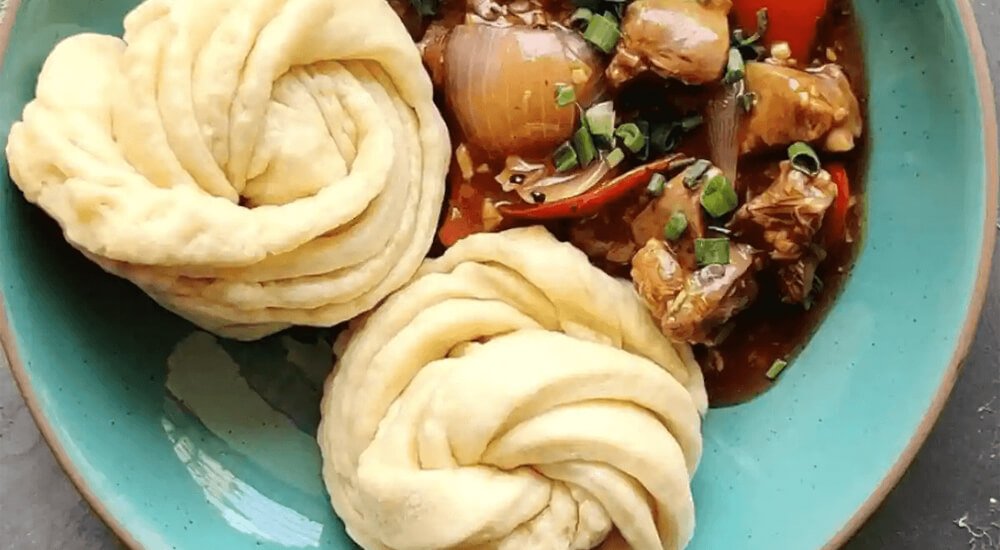
Chhurpi:
Chhurpi is crafted from the rich milk of yaks. This cheese offers a one-of-a-kind flavour profile and boasts a resilient, chewy texture. It is a favoured snack on its own and also finds its way into numerous recipes, lending its distinct taste to various dishes.
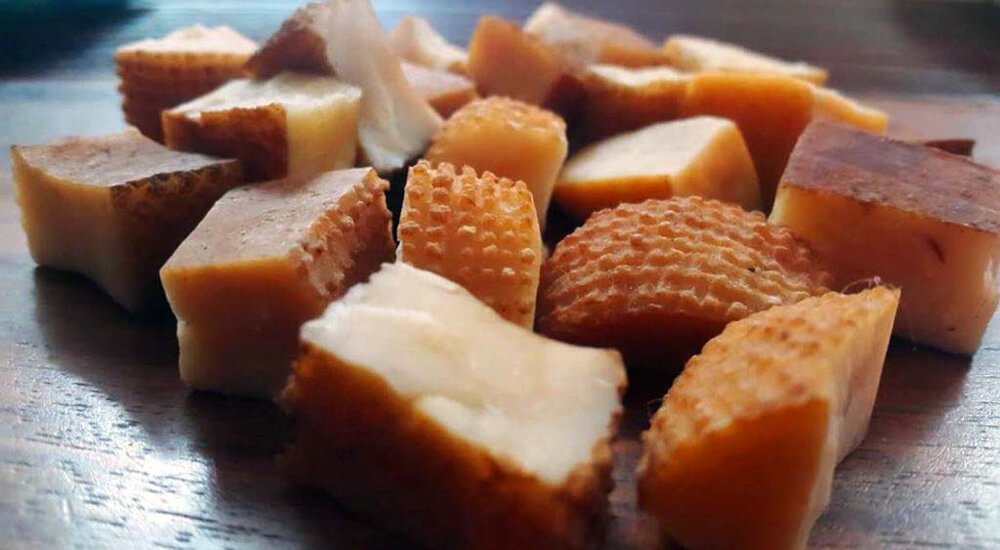
Harissa:
Harissa is a traditional dish of Skardu that has a special place in its culinary traditions. It is a wholesome and comforting food, especially popular during the cold winter months.
Harissa is not just a dish; it carries cultural and social significance in Skardu. It is often prepared for special occasions, family gatherings, and weddings.
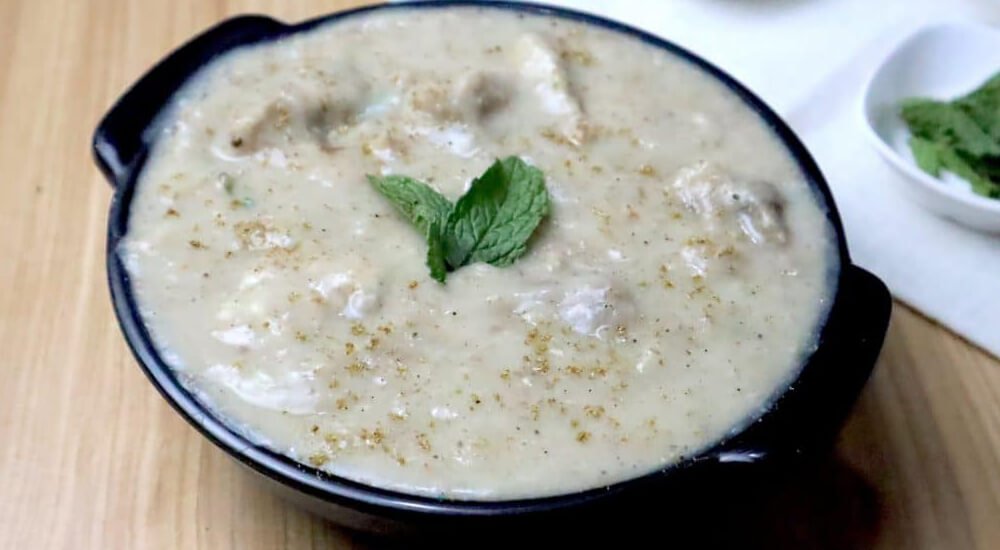
Khambir:
Khambir, a classic whole wheat bread in Skardu, is traditionally round and lightly leavened, baked to perfection in clay ovens. This bread boasts a dense yet tender texture, making it a perfect companion to various dishes or simply delightful when savoured.
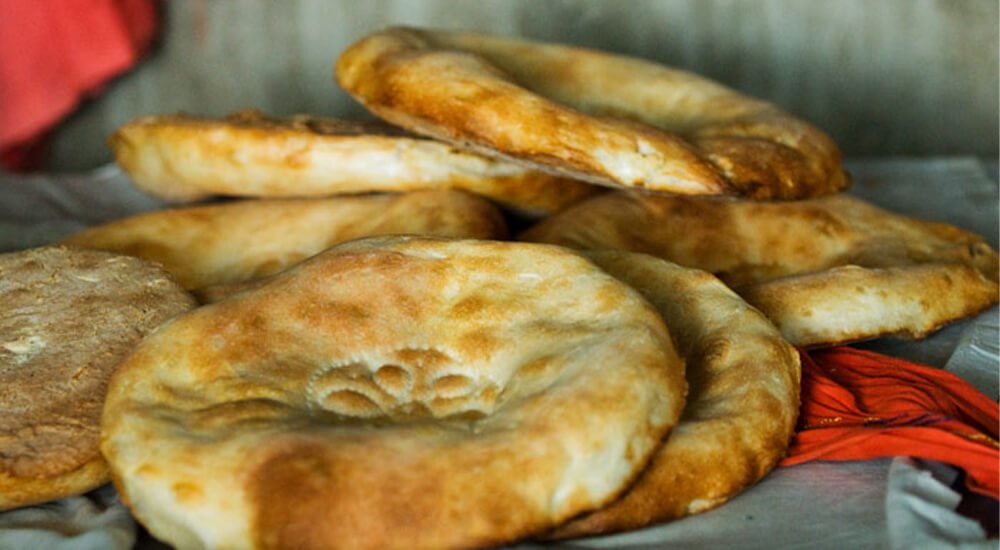
Girewan:
Girewan is a savoury delicacy featuring roasted meat, commonly lamb or goat, prepared with a blend of spices and occasionally yoghurt to achieve the desired tenderness.
The medley of spices imparts a sumptuous and aromatic depth to the meat, resulting in a gratifying dish frequently accompanied by bread or rice.
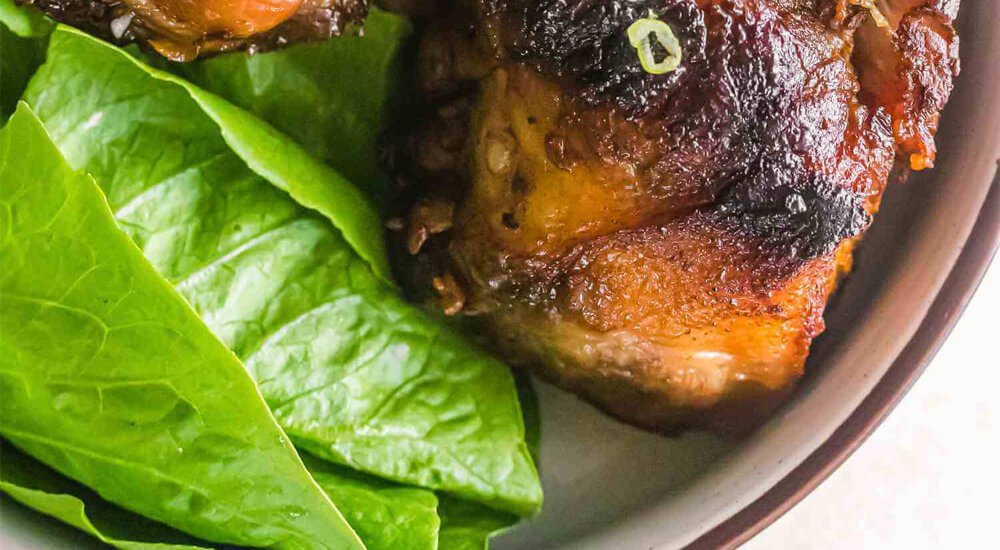
Thukpa:
Thukpa is a beloved noodle soup that holds a special place in the hearts of Skardu residents, particularly during the colder months. This comforting dish features hand-pulled wheat noodles bathed in a rich broth, infused with a medley of vegetables, and often complemented by tender meat, typically chicken or beef.
Thukpa is a heartwarming and satisfying meal cherished by locals seeking comfort and nourishment.
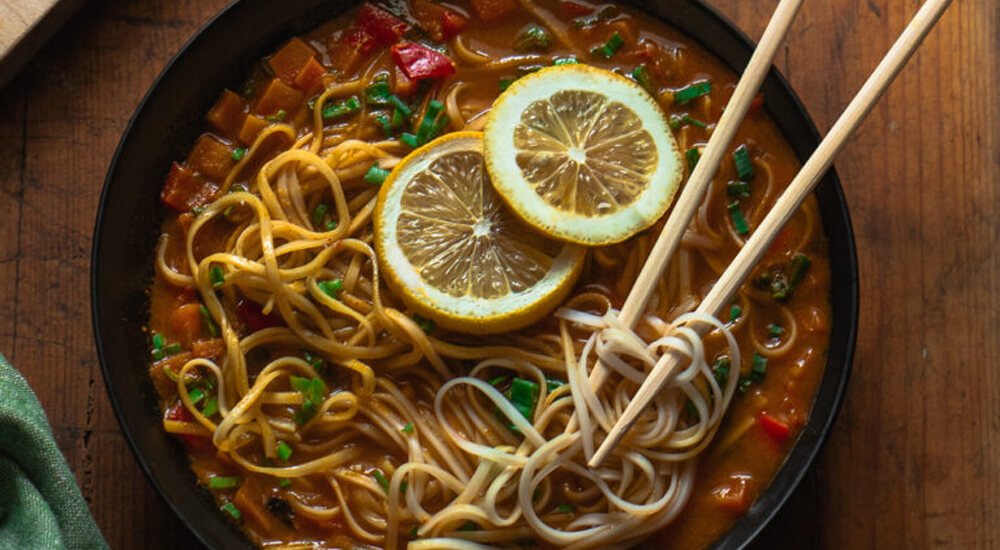
Butter Tea (Gur Gur Chai):
Butter Tea, locally known as “Gur Gur Chai,” is prominent in Skardu’s traditions. Crafted by blending tea leaves with yak butter and a touch of salt, it gives rise to a distinctive and savoury beverage.
This tea serves as a comforting drink in chilly climates and offers a substantial energy boost owing to its generous fat content.
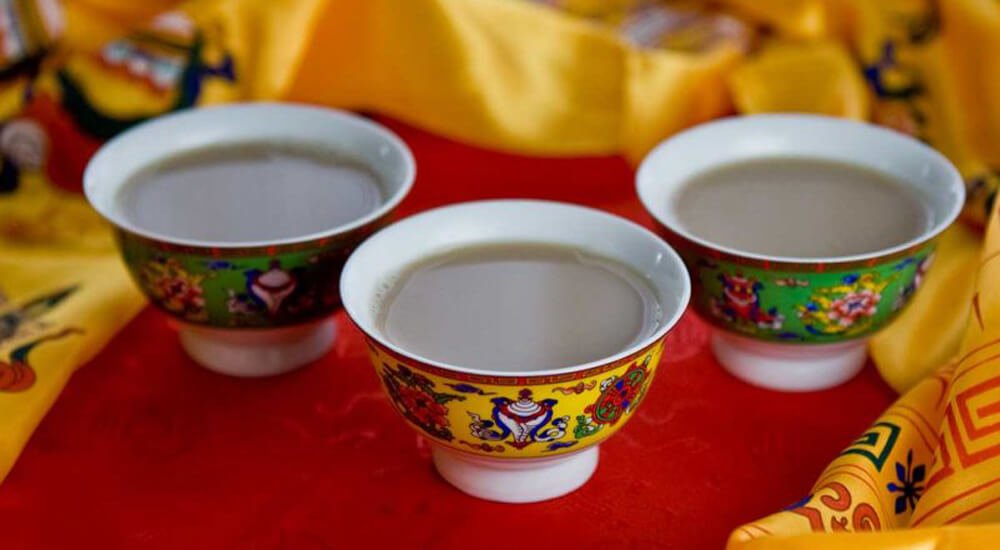
Preserving Culinary Heritage:
Recipes in Skardu are treasured heirlooms passed down orally or in manuscripts through generations. The transmission of culinary knowledge embodies cultural continuity, ensuring that the essence of food in Skardu remains alive and a cherished link to the past.
Culinary Craftsmanship:
Skardu proudly boasts unique cooking styles and utensils intrinsic to its culinary traditions. From traditional clay ovens used for baking bread to the art of slow-cooking meats in a symphony of aromatic spices, these techniques showcase the region’s distinct culinary prowess, reflecting a heritage of culinary craftsmanship that defines Skardu’s gastronomic identity.
Best Time to Visit Skardu Restaurants:
The best time to visit restaurants in Skardu largely depends on your preferences and the kind of experience you seek. Here are a few factors to consider:
- Weather: Skardu experiences varying weather conditions throughout the year. If you prefer milder weather, the best time to visit restaurants is from late spring to early autumn, roughly from May to September. The temperatures are relatively moderate during this period, and outdoor dining can be quite enjoyable.
- Tourist Season: Skardu is a popular tourist destination, and the best time to visit restaurants for a lively atmosphere is during the peak tourist season, which typically occurs from late spring to early autumn. You’ll find more restaurant options and a wider variety of dishes and dining experiences.
- Ramadan: It’s essential to be aware of the Islamic holy month of Ramadan, which involves fasting during daylight hours. Many restaurants in Skardu may have limited operating hours during this time, with daytime closures being common. However, after sunset, restaurants become vibrant places to enjoy Iftar (the evening meal that breaks the fast) and delicious local dishes.
- Off-Peak Times: If you prefer quieter dining experiences and want to avoid crowds, consider visiting Skardu during the off-peak season, which typically falls during the winter months (November to April). While some restaurants may close or have reduced hours during this time, you can still savour local cuisine in a more serene setting.
- Special Occasions: Remember that Skardu hosts various cultural and religious festivals annually. These events often lead to a surge in local celebrations and dining. If you want to immerse yourself in the local culture and festivities, visiting restaurants during these times can be a unique experience.
Conclusion
In conclusion, the culinary landscape of Skardu, Pakistan, is a vibrant tapestry of flavours. And traditions deeply rooted in its rich cultural heritage and breathtaking natural surroundings.
From hearty stews and aromatic dumplings to comforting bread and unique beverages, Skardu’s cuisine offers diverse dishes that reflect the region’s distinct identity.
The use of local ingredients, time-honoured recipes passed down through generations, and a blend of cultural influences create an authentic and captivating culinary experience.
Whether savouring traditional dishes, exploring street food delights, or enjoying specialities like Shapik Shapik and Khambir, the food in Skardu is not just nourishment but a reflection of the warmth and hospitality of its people, making it an essential part of the region’s cultural tapestry.
Read more: 26 Best Pakistani Food to Eat When You Are in Pakistan – Click Pakistan

